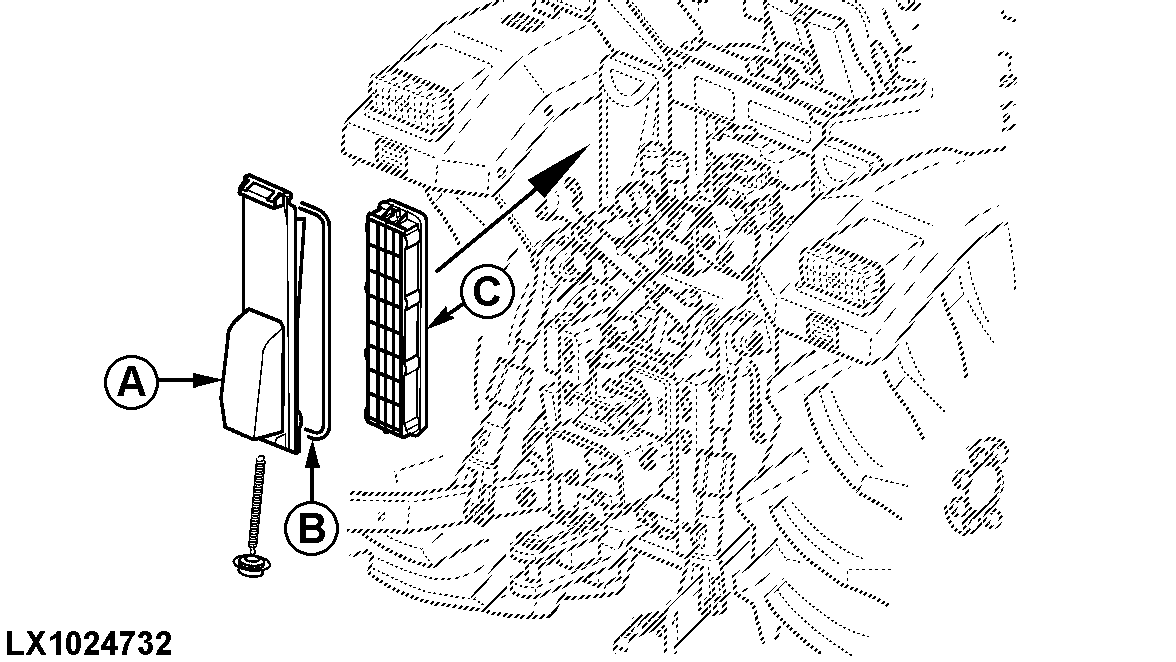Replacing the Fresh Air Filters

|
|
NOTE: In dusty conditions, this job should be done at more frequent intervals. 1. Remove cover (A). Check seal (B) for signs of damage, and replace if necessary. Take out the existing fresh air filter (C). 2. Carefully inspect the air ducts for any indication of fresh air leakage. Everything downstream from the cab |
air filter should be reasonably clean. If you find any accumulation of dirt on the "clean air" side, identify and correct the cause of leakage. The evaporator housing is exposed to outside air. If dust has collected in the air ducts, remove the seat and evaporator housing cover. At the points where the heater and refrigerant lines enter the housing, check that the seals are in good condition. Also check for possible leaks in the air passages that lead from the evaporator housing to the cowl.
3. Check the condition of the seals at the windows and doors. Also inspect the seals at the controls and the hydraulic and electric lines. Sealing is important to maintain adequate cab pressure, which is necessary to prevent pesticides from leaking into the cab. 4. Install the new fresh air filters. |
OU12401,0000520 -19-01DEC00-1/1 |
 CAUTION:
Prolonged exposure to pesticides may cause serious injury or even death.
CAUTION:
Prolonged exposure to pesticides may cause serious injury or even death.